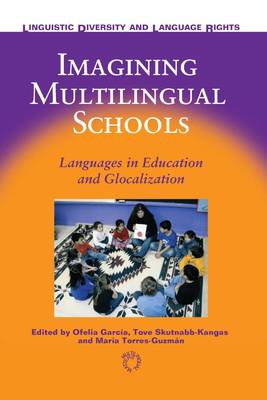
- Afhalen na 1 uur in een winkel met voorraad
- Gratis thuislevering in België vanaf € 30
- Ruim aanbod met 7 miljoen producten
- Afhalen na 1 uur in een winkel met voorraad
- Gratis thuislevering in België vanaf € 30
- Ruim aanbod met 7 miljoen producten
Imagining Multilingual Schools
Languages in Education and Glocalization
Omschrijving
This book brings together visions and realities of multilingual schools throughout the world in order to examine the pedagogical, socioeducational, and sociopolitical issues that impact on their development and success. The chapters describe and analyze pedagogical, instructional, and policy efforts to develop multilingualism through school with different targeted populations -- immigrant students, indigenous peoples, traditional minorities, majorities, and multiethnic/multilingual groups. Each contribution, many written by well-known scholars in the field of bilingual and multilingual education, affirms the desirability of multilingualism as a societal resource and as a right of individuals, while acknowledging the social, economic and political differences that make the acquisition of multilingualism easy for some, and difficult for others. And yet, the book focuses on the school as a place of promise and resistance, having the potential to preserve, recover, and expand the world's linguistic diversity. The introduction, written by the co-editors, identifies the conceptual threads that are developed throughout the chapters. But the chapters themselves remind us of the importance of local conditions, despite the global pressures of the 21st century, in imagining and creating multilingual educational spaces.
Specificaties
Betrokkenen
- Uitgeverij:
Inhoud
- Aantal bladzijden:
- 344
- Taal:
- Engels
- Reeks:
- Reeksnummer:
- nr. 2
Eigenschappen
- Productcode (EAN):
- 9781853598951
- Verschijningsdatum:
- 31/07/2006
- Uitvoering:
- Hardcover
- Formaat:
- Genaaid
- Afmetingen:
- 157 mm x 231 mm
- Gewicht:
- 771 g

Alleen bij Standaard Boekhandel
Beoordelingen
We publiceren alleen reviews die voldoen aan de voorwaarden voor reviews. Bekijk onze voorwaarden voor reviews.










